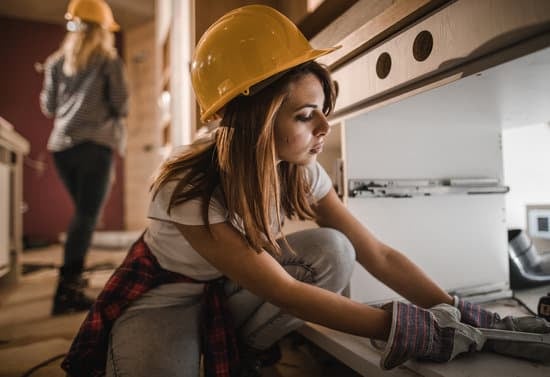What are home capital improvements? Home capital improvements refer to significant renovations or enhancements made to a property that increase its value, durability, or functionality. These improvements go beyond basic maintenance and repairs, focusing on long-term investments to enhance the overall quality and appeal of the home.
Investing in home capital improvements can have a multitude of benefits for homeowners. Not only can they improve the livability and comfort of a space, but they can also increase the resale value of the property. By making strategic upgrades, homeowners can enjoy a more functional and aesthetically pleasing living environment while also potentially seeing a return on their investment in the future.
From kitchen remodels to bathroom renovations, there are various common types of home capital improvements that homeowners can consider. These projects can range from minor updates like fresh paint and new fixtures to major overhauls such as adding additional square footage or upgrading outdated systems. Each improvement is aimed at enhancing the overall value and appeal of the property in different ways.
Importance of Investing in Home Capital Improvements
Home capital improvements are investments made in a property to enhance its overall value and functionality. These upgrades can range from minor repairs to major renovations that significantly improve the quality of a home. Investing in home capital improvements is crucial for homeowners looking to maintain or increase the value of their property over time.
Enhancing Long-Term Value
One of the primary reasons why homeowners should consider investing in capital improvements is to enhance the long-term value of their property. By making strategic upgrades and renovations, homeowners can boost the resale value of their homes and attract potential buyers in the future. Features such as updated kitchens, bathrooms, energy-efficient windows, and improved landscaping can greatly increase a home’s market value.
Improving Comfort and Livability
In addition to increasing property value, home capital improvements also contribute to improving the overall comfort and livability of a home. Upgrades such as installing central air conditioning, updating insulation for better energy efficiency, or adding a deck or patio for outdoor living space can make a significant difference in how enjoyable and functional a home is for its residents. These improvements not only add convenience but also enhance daily living experiences.
Enhancing Safety and Security
Another important aspect of investing in home capital improvements is enhancing safety and security within the property. Upgrades like installing security systems, replacing old locks with more secure ones, or updating electrical systems can help create a safer environment for homeowners and their families.
These investments not only provide peace of mind but also protect against potential hazards or risks within the home. By prioritizing safety through strategic improvements, homeowners can ensure a secure living environment for themselves and their loved ones.
Common Types of Home Capital Improvements
Home capital improvements refer to enhancements made to a property that increase its overall value, functionality, and aesthetics. Investing in these upgrades not only improves the quality of your living space but also has the potential to boost your home’s resale value in the future. From minor renovations to major construction projects, there are various types of home capital improvements that homeowners can consider to enhance their properties.
Here are some common types of home capital improvements:
- Kitchen Renovations: Updating kitchen features such as cabinets, countertops, appliances, and flooring can modernize the heart of your home and increase its appeal to potential buyers.
- Bathroom Remodeling: Revamping bathrooms with new fixtures, tiles, lighting, and storage solutions can add comfort and luxury while improving the overall value of your property.
- Exterior Upgrades: Enhancing curb appeal through landscaping, painting, siding repairs, roof replacements, or adding outdoor amenities like patios or decks can make a significant impact on your home’s overall value.
Undertaking these types of home capital improvements can provide numerous benefits for homeowners. Not only do they improve the livability and functionality of the home, but they also have the potential to increase energy efficiency, reduce maintenance costs in the long run, and create a more enjoyable space for you and your family to enjoy.
Before embarking on any renovations or upgrades, it is essential to carefully plan and budget for these projects to ensure they align with your goals and financial resources.
Benefits of Home Capital Improvements
Home capital improvements are investments made in a property to increase its overall value, functionality, and aesthetics. One of the primary benefits of undertaking such projects is the potential to significantly enhance the quality of life for homeowners. By improving different aspects of a home, such as energy efficiency, security features, and overall appearance, individuals can create a more comfortable living environment for themselves and their families.
Another key advantage of investing in home capital improvements is the potential to lower long-term maintenance costs. By addressing issues proactively and making upgrades to essential systems like plumbing, electrical, and HVAC, homeowners can prevent costly repairs down the line. Additionally, modernizing certain aspects of a property can lead to reduced utility bills through improved energy efficiency, ultimately saving money over time.
Furthermore, home capital improvements have the potential to increase the resale value of a property. Upgraded kitchens, bathrooms, landscaping, or additional living spaces can make a home more attractive to potential buyers and justify a higher asking price. This can be particularly beneficial for homeowners looking to sell their property in the future or simply wanting to build equity in their investment.
| Aspect | Benefit |
|---|---|
| Increased Property Value | Potential for higher resale value |
| Energy Efficiency | Savings on utility bills over time |
| Enhanced Quality of Life | A more comfortable living environment |
How to Plan for Home Capital Improvements
When considering what are home capital improvements, it is essential to create a solid plan to ensure the project’s success. Planning for home capital improvements involves several key steps that can help homeowners achieve their desired results while staying within budget and timeline constraints.
One crucial aspect of planning is to clearly define the scope of the improvement project. This includes identifying the specific areas of the home that will be updated or renovated, as well as setting goals for the project’s outcome.
Another important step in planning for home capital improvements is to conduct thorough research on materials, contractors, and design options. Homeowners should take the time to explore different possibilities and gather cost estimates before making any final decisions. Researching various options can help homeowners make informed choices that align with their needs and budget constraints. Additionally, it is crucial to consider any necessary permits or regulations that may apply to the planned improvements.
Creating a realistic timeline for home capital improvements is also essential during the planning phase. Homeowners should take into account factors such as lead times for materials, contractor availability, and any potential setbacks that may occur during the renovation process.
By establishing a clear timeline from start to finish, homeowners can effectively manage expectations and ensure that the project stays on track. Ultimately, proper planning is key to successful home capital improvements that enhance both the functionality and aesthetic appeal of a property.
| Aspect of Planning | Description |
|---|---|
| Defining Project Scope | Identifying specific areas of the home to be improved and setting goals. |
| Researching Options | Exploring materials, contractors, and design choices while gathering cost estimates. |
| Establishing Timeline | Creating a realistic timeline considering material lead times, contractor availability, and potential setbacks. |
Budgeting for Home Capital Improvements
Setting Priorities
One of the first steps in budgeting for home capital improvements is to identify which areas of your home require attention the most. Make a list of necessary repairs, upgrades, or renovations that will have the most significant impact on your home’s value and functionality. By setting priorities, you can allocate your budget wisely and focus on the projects that are most important to you.
Researching Costs
Before finalizing your budget, it is essential to research the costs associated with each project you plan to undertake. Get quotes from contractors or suppliers, compare prices for materials and labor, and consider any additional expenses such as permits or design fees. Understanding the potential costs involved in your home improvement projects will help you create a more accurate budget and avoid any unexpected financial surprises along the way.
Creating a Contingency Fund
In addition to allocating funds for specific projects, it is also advisable to set aside a contingency fund when budgeting for home capital improvements. Unexpected issues may arise during construction or renovation that could impact your budget.
Having a contingency fund can provide financial security and peace of mind in case additional expenses come up during the course of your home improvement projects. By planning carefully and accounting for possible contingencies, you can ensure that your investments in home capital improvements are successful and rewarding in the long run.
DIY vs Professional Home Capital Improvements
When it comes to making capital improvements in your home, one important decision you’ll need to make is whether to tackle the project yourself or hire professionals. Both options have their pros and cons, so it’s essential to weigh them carefully before making a decision.
DIY home capital improvements can be a cost-effective option for those who have the time, skills, and tools necessary to complete the project. By taking on the work yourself, you can save money on labor costs and have more control over the project timeline. However, it’s important to remember that some projects may require specific expertise or permits that you may not possess.
On the other hand, hiring professionals for home capital improvements can ensure that the job is done correctly and efficiently. Professionals have the knowledge and experience needed to tackle complex projects effectively, saving you time and potential headaches. While this option may be more expensive upfront, it can provide peace of mind knowing that your project is in capable hands. Additionally, professionals may offer warranties on their work, providing added protection for your investment.
Increasing Home Value Through Capital Improvements
Investing in home capital improvements is not only a way to enhance the aesthetic appeal of your home but also a strategic way to increase its overall value. By making thoughtful upgrades and renovations, homeowners can significantly boost their property’s market worth. Improving key areas of the house can attract potential buyers if you ever decide to sell or rent out your home in the future.
What are home capital improvements? These are enhancements that add value to your property and make it more desirable in the real estate market.
One of the most common ways homeowners increase their home value through capital improvements is by updating kitchens and bathrooms. These spaces are some of the most used areas in a home, and modernizing them can have a substantial impact on the overall value. Upgrading appliances, installing new fixtures, replacing countertops, and revamping cabinets are just some of the ways to transform these rooms into attractive features that elevate your property’s worth.
Another effective strategy for increasing home value through capital improvements is enhancing curb appeal. First impressions matter greatly when it comes to real estate, and improving the exterior of your home can significantly raise its market value.

Simple projects such as landscaping, painting, replacing siding or roofing, and upgrading the front door can make a big difference in how your property is perceived. A well-maintained exterior not only adds aesthetic appeal but also shows potential buyers that the entire property has been well cared for over time.
Conclusion
In conclusion, making home capital improvements is a crucial aspect of homeownership that can enhance both the functionality and aesthetic appeal of your residence. By investing in these upgrades, you not only increase the value of your property but also create a more comfortable living space for you and your family. Whether it’s renovating the kitchen, adding a deck, or upgrading the HVAC system, these improvements can make a significant impact on your daily life.
One of the key benefits of home capital improvements is the long-term cost savings they can provide. By installing energy-efficient appliances or improving insulation, you can reduce utility bills and maintenance costs over time. Additionally, these upgrades can also contribute to a healthier and more sustainable environment for you and future generations. It’s important to carefully plan and budget for these improvements to ensure that you get the most value out of your investment.
Whether you choose to take on DIY projects or hire professionals, the decision to make home capital improvements should align with your goals for enhancing your living space. Ultimately, by prioritizing strategic upgrades and maintaining your property regularly, you can not only enjoy a more comfortable and functional home but also increase its market value in the long run. So, consider what areas of your home could benefit from improvements and start planning how to make them a reality.
Frequently Asked Questions
What Are Examples of Capital Improvements?
Examples of capital improvements include renovations that increase the value of a property, such as adding a new room, installing a new roof, updating the kitchen or bathroom, or replacing windows and doors. These improvements typically have a lasting impact on the property’s worth.
What Does the IRS Consider Capital Improvements on Home?
The IRS considers capital improvements on a home as those that add value to the property, prolong its useful life, or adapt it to new uses. These improvements can potentially be added to the cost basis of the home and reduce taxes when selling.
What Home Improvements Are Against Capital Gains?
Some home improvements are exempt from consideration in calculating capital gains tax when selling a primary residence. This includes repairs and maintenance costs to keep the property in good condition but does not cover cosmetic upgrades or routine repairs like painting or landscaping.

I’m thrilled to have you here as a part of the Remodeling Top community. This is where my journey as an architect and remodeling enthusiast intersects with your passion for transforming houses into dream homes.





